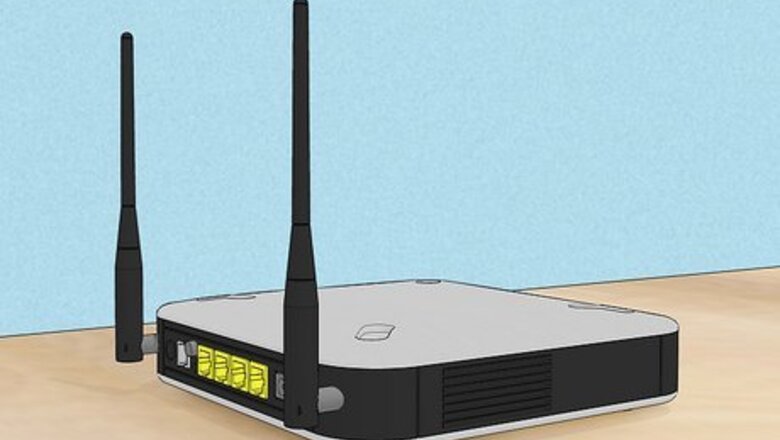
views
- If your ISP doesn't offer a modem and router with their internet packages that you like, you can buy one from almost any electronics retailer.
- Connect the router to your computer via an ethernet cable so you can set up Wi-Fi settings.
- Log into your router from your computer's web browser and create a network name and password.
Installation
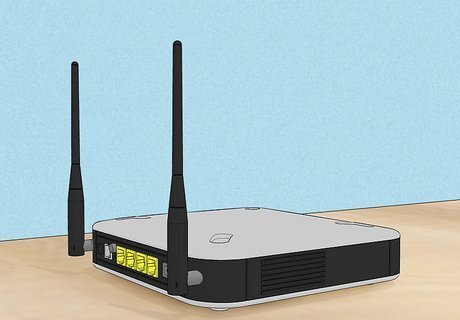
Acquire a wireless router. Most ISPs include router and modem rentals with their internet packages, so you don't have to worry about getting the correct equipment! There are a variety of factors that will determine which router is best for you. These include distance, interference, transfer speed, and security. One of the most important factors to consider when purchasing a router is the distance between the router and the devices that you are wirelessly connecting. More expensive routers generally have more antennae, which can lead to a more stable connection at further distances. Another factor to consider is the amount of signal interference. If you have multiple devices that operate on the 2.4 GHz band, such as microwaves and cordless phones, these can interfere with the Wi-Fi signal. Newer routers can operate on the 5 GHz band, which is much less crowded and thus less prone to interference. The drawback is that 5 GHz signals do not travel as far as 2.4 GHz signals. . If you're purchasing a separate router and modem, transfer speed is a feature to consider. Newer routers claim to be able to transfer data up to 450 Mbps. While this may be helpful when moving data between two computers over a network, it will not increase your general Internet speed, as this is set by your ISP. There are three main router speeds available: 802.11g (54 Mbps) 802.11n (300 Mbps), and 802.11ac (450 Mbps). It is important to note that these speeds are virtually impossible to attain in any environment other than a clean room free of signal interference. Finally, make sure that the router you are purchasing has the latest form of wireless encryption, WPA2. This is pretty much standard in all new routers but is something to consider if purchasing an older, second-hand router. Older encryption algorithms are much less secure; a WEP key can be cracked in just a few minutes.
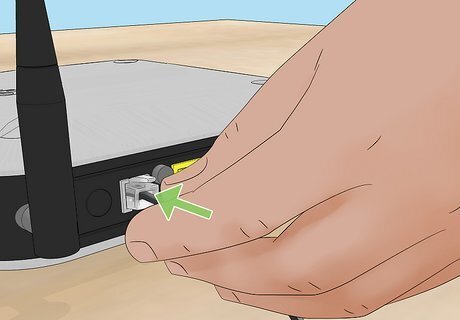
Connect the router to your modem. Many ISPs will hand out router/modem combined units, so you don't need to worry about many of these steps involving separate units. Once you've purchased your router, you will need to connect it to your modem. The router will have a port in the back labeled WAN/WLAN/Internet. Connect this port to the modem using a standard Ethernet cable. Make sure that the router is properly powered and turned on.
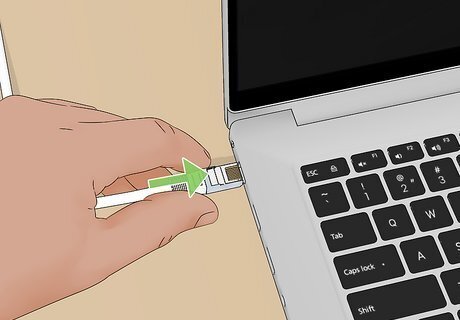
Connect a computer via an ethernet cable. This step is not always necessary but can be very useful if you want to set up the wireless router before connecting any wireless devices to it. Connecting a computer through a physical cable will allow you to tinker with the wireless settings without losing your connection to the router. For optimum efficiency while setting up the router, plug it in next to your computer while you adjust the settings. After you are finished configuring the router, you can move it to where it will normally stay. EXPERT TIP Kevin Burnett Kevin Burnett Software Developer Kevin Burnett is a Software Developer with over 20 years of professional experience. He spent the majority of his career at Rosetta Stone, a language-learning software company. He has experience with both front and back-end development and works primarily in Ruby, Python, and JavaScript. Kevin Burnett Kevin Burnett Software Developer Wireless security still relies on physical wired networking. You need fundamentals like internet service, hardware routers and Ethernet cables making connections. Wireless grows out of this hardline backbone.
Configuration
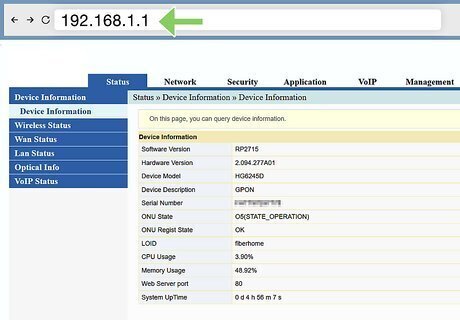
Open the router's configuration page. If your router did not come with any installation software, you will need to connect to the router's configuration page through your web browser. Open your browser of choice and enter the web address for the router. This is typically 192.168.1.1 or 192.168.0.1. Consult the documentation that came with the router to find the exact address. You will be asked for a username and password to continue into the router configuration. These are also provided in the documentation that came with your router. Typical defaults are username: admin and Password: password or admin.
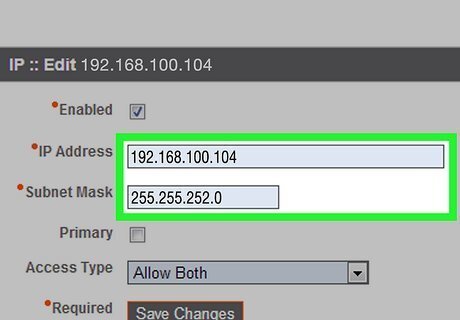
Enter your Internet connection information. This includes the IP address and DNS information from your internet service provider. Most routers will fill this section in automatically. If it does not, contact your ISP for the information that you need to enter.
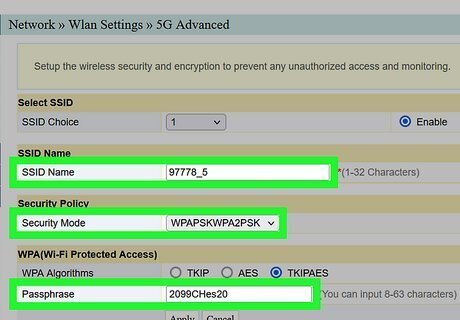
Set your wireless settings. Most routers will have a Wireless Settings section towards the top of the router's menu. From this section, you can enable or disable the wireless signal, change the network name, and set the encryption. To set the name of the network, select the SSID field. This is the name that will be displayed on any device that detects your network. If you are living in an area with a lot of public traffic, avoid putting any identifiable information in the SSID, as anyone with a wireless device can see it. Make sure to set the encryption to the latest version allowed by your router. In most cases, this will be WPA2. WPA2 operates with a single password. You can enter whatever you'd like, but a strong password is recommended. Stronger passwords contain upper and lowercase letters, numbers, and symbols.

Apply your settings. Make sure you click the Apply or Save Changes button in your router's configuration when you are done changing the settings. The router will process for a moment, and your new settings will take effect.
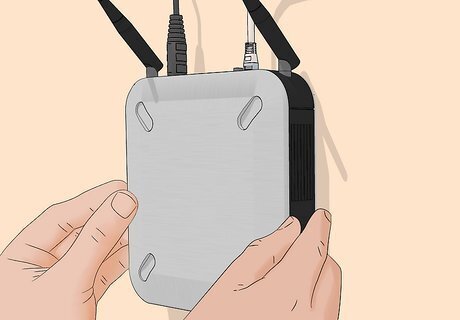
Place your router. In order to get the best possible signal, try to place your router in a central location. Keep in mind that any obstacles such as walls and doors will degrade the signal. If you have multiple floors, you may want to consider multiple routers to ensure that you have the coverage you need. Remember that it must be physically connected to your modem, so this may limit your options when placing the router.
Connecting
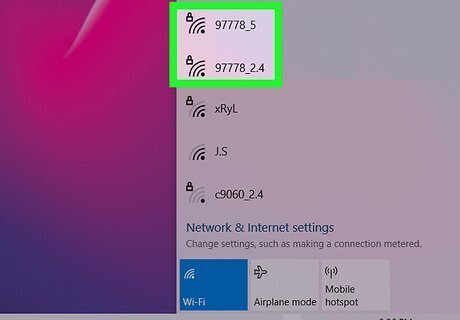
Connect your device to Wi-Fi. Once the router is broadcasting a wireless signal, you can test the connection by scanning for wireless networks. On an Android, swipe down from the top of your screen and tap and hold the Wi-Fi icon, which will open your Wi-Fi settings. Slide the "Wi-Fi" switch to "ON" (or tap the option to Use Wi-Fi) and tap a network's name. On an iPhone or iPad, open Settings and tap Wi-Fi, tap the switch ON, and tap your network's name. On macOS, click the Wi-Fi icon in the menu bar at the top of the screen, and click your network's name. If the network doesn't require a password, your Mac will connect automatically. If a password is required, you'll be prompted to enter it now. On Windows 10/11, click the network icon in the taskbar, then click your network's name. Click Connect next to the network you want to join. If the network has no password, you'll connect automatically after clicking Connect.
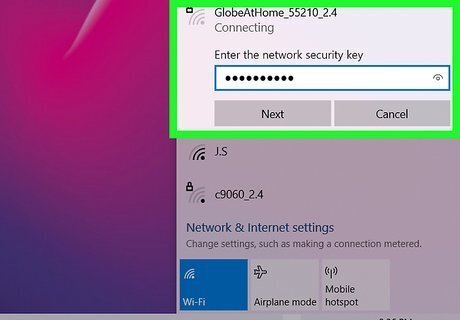
Enter the password. If you enabled WPA2 encryption, you will need to enter your password to connect to the network. If you are using a private computer, you can disable the hidden characters on some systems to let you see the password you are typing easier.

Test your connection. Once you are connected to the network, wait a moment for your IP address to be assigned. Open a web browser and try to connect to a website you don't normally visit (this will ensure that you aren't loading the website from memory).


















Comments
0 comment